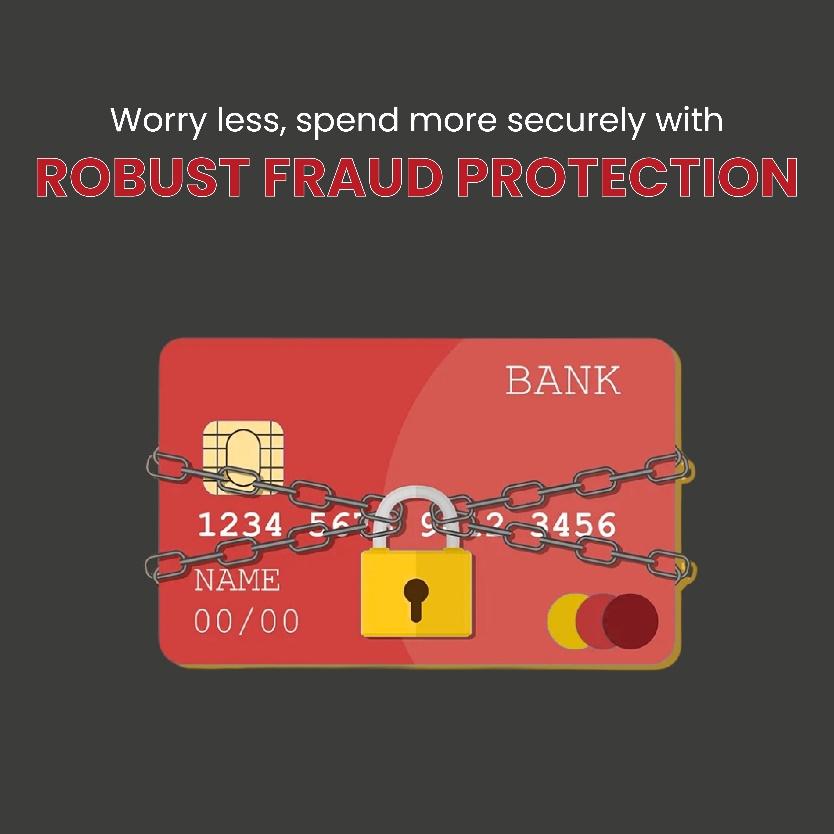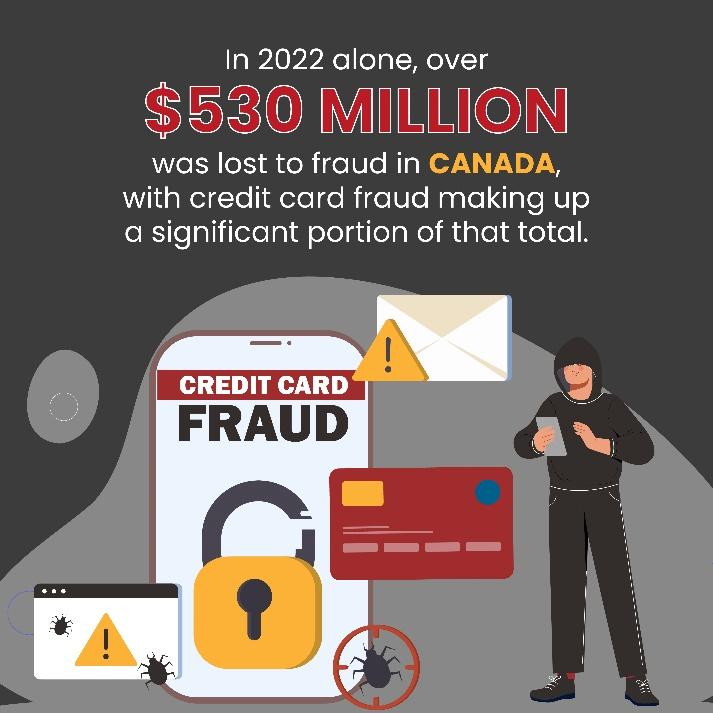It always starts with a little confusion, and maybe it’s a late-night email alert about an unexpected charge. Maybe it’s a missing $250 from your account — and you know you didn’t buy anything. For Jenna in Ottawa, it was a ski rental in British Columbia… while she was in bed with the flu.
“I remember freezing,” she said, “not because of the money, but because it felt like someone had just walked into my house and taken my wallet.”
Welcome to the modern reality of credit card fraud — a fast-evolving threat that targets Canadians every day. In 2022 alone, over $530 million was lost to fraud in Canada, with credit card fraud making up a significant portion of that total. But here’s the good news: Canada has some of the strongest credit card fraud protection measures in the world — if you know how to use them.
Let’s break it all down — how to stay safe, what protection your credit card really offers, and what to do when something goes wrong.
Why Credit Card Fraud Is on the Rise
In the age of contactless payments, one-click shopping, and stored payment information, convenience has certainly brought about its fair share of risks. Today’s fraudsters have evolved; they are no longer simply picking pockets in crowded spaces — now, they are adeptly picking passwords, exploiting algorithms, and targeting weak spots in outdated systems. This new era of financial transactions has led to a significant shift in how we think about security.
Canadians, in particular, are especially vulnerable due to our strong affinity for digital banking and e-commerce. The increasing popularity of cash back credit cards has also encouraged many of us to become more active online shoppers, creating a booming environment in which fraud can thrive. This surge in online activity has made it essential for consumers to become more aware of their digital footprints and the potential threats that come along with them.
So, what does this mean for you? In response, it’s time to go beyond traditional security measures like PIN codes and paper statements. We need to adopt more robust and proactive security practices, such as multi-factor authentication, regular monitoring of financial accounts, and being vigilant about the links we click and the information we share online. Prioritizing security in our digital lives has never been more crucial.
Key Security Features of Canadian Credit Cards
Modern credit card fraud protection in Canada is robust — if not outright impressive. Most major banks and card issuers include advanced features as standard, such as:
EMV Chip Technology
The EMV chip (you know, the metallic square on your card) encrypts your payment info at the point of sale, making it extremely difficult for fraudsters to clone your card. While not foolproof, this tech has massively reduced in-person fraud.
Real-Time Transaction Alerts
Many banks and providers like Amex cash back cards or TD’s Visa cards offer text or email alerts for every transaction, so you know immediately if something’s fishy. Some apps even allow you to freeze or unfreeze your card in seconds.
Two-Factor Authentication (2FA)
When shopping online, you may be asked to verify your identity through a text message or biometric check. This extra layer of security makes it harder for fraudsters to complete unauthorized purchases, even if they somehow get your card number.
Tokenization
For mobile wallet users (think Apple Pay or Google Pay), your card number is never actually transmitted. Instead, a token replaces it, shielding your real data from exposure.
These are powerful tools — but they’re only effective when paired with smart usage and the right credit card.
Best Cards for Fraud Protection in Canada
If security is your top priority, you’ll want to look for cards that offer the most comprehensive protection suite — and yes, many of them also fall under the category of top-rated cash back credit cards.
Here are a few standout options:
1. American Express SimplyCash Preferred Card
Amex cash back cards are known not just for great returns, but also for excellent customer service when things go wrong. This card offers:
- Industry-leading zero liability protection
- Real-time fraud alerts
- Purchase protection and extended warranty
- Contactless tokenization via mobile wallets
Amex’s fraud dispute process is smooth, responsive, and consumer-friendly.

2. Scotiabank Momentum Visa Infinite
Another top-rated cash back credit card offers 4% back on groceries and recurring bills. But the real value?
- Visa’s Zero Liability policy
- Advanced digital fraud monitoring
- Emergency card replacement within 24–48 hours
What “Zero Liability” Actually Means
Many Canadians hear the term “zero liability” and automatically assume they are fully protected against any fraudulent charges, no matter the circumstances. However, the reality is a bit more nuanced, and it comes with important terms and conditions that must be understood.
The concept of “zero liability” means that you will not be held responsible for any unauthorized charges made to your account, provided you meet certain criteria. First and foremost, you mustn’t hand over your Personal Identification Number (PIN) or card information in a negligent manner, as this could void your protection.
Secondly, you must report any suspicious activity or unauthorized transactions promptly; the timing of your report plays a crucial role in your liability coverage. Finally, the charges must be verified as fraudulent after a thorough investigation by your financial institution.
While this protection is indeed real and provides a sense of security, consumers must act quickly and remain vigilant. By taking proactive steps to monitor your account activity, you can help ensure that you take full advantage of the zero liability policy and protect your financial well-being. Always remember that staying informed is key to safeguarding your finances.
How to Act if You Suspect Fraud
Say you spot a transaction that doesn’t look right. What now? Time is of the essence.
Step 1: Lock Your Card Immediately
Most banking apps today allow you to lock your card instantly. This stops further charges while you investigate.
Step 2: Call Your Issuer’s Fraud Line
All major credit card providers have a dedicated fraud hotline. Call them immediately to start the process.
Step 3: Review Your Transactions
Go over recent charges. Sometimes, the issue is a merchant name you don’t recognize. If you confirm it’s fraud, you’ll likely need to file a report and sign a statement of dispute.
Step 4: Check for Identity Theft
If someone used your credit card, there’s a chance your other personal info may be at risk, too. Consider placing a fraud alert on your credit report with Equifax or TransUnion.
Step 5: Update Auto-Payments
Once your card is replaced, don’t forget to update any recurring charges or subscriptions tied to the old number.
Everyday Habits That Protect You From Fraud
Good card providers can offer help and support, but cultivating smart habits is ultimately your best defence against fraud and unauthorized transactions. Here’s a comprehensive overview of what security experts recommend for safeguarding your financial information:
First and foremost, it’s crucial to avoid shopping on public Wi-Fi networks. These networks can be easy targets for hackers looking to intercept sensitive data. If you must use public Wi-Fi, consider using a Virtual Private Network (VPN) for additional encryption.
Next, always use strong, unique passwords for your banking and shopping accounts. This means avoiding easily guessable passwords and using a combination of letters, numbers, and symbols. A password manager can also be a valuable tool for keeping track of multiple strong passwords.
Additionally, never click on links in suspicious emails. Phishing scams remain one of the most effective tactics used by cybercriminals, so be cautious about unsolicited messages.
Monitoring your financial activities is also essential. Checking your statements weekly, rather than monthly, can help you catch any unauthorized transactions much sooner.
Lastly, consider using mobile wallets, which provide added protection through tokenization. This technology helps to secure your financial information during transactions. Being proactive with these measures significantly reduces the chances that you’ll ever need to file a dispute.
The Bottom Line: Safety, Convenience, and Confidence
In an increasingly digital world, your credit card is both a lifeline and a liability. But with the right card and smart habits, it can be more of a lifeline than a risk.
Credit card fraud protection in Canada has evolved far beyond just a few safeguards — it’s an ecosystem. Today’s top-rated cash back credit cards combine great rewards with real protection. Cards like Amex cash back options and premium Visa or Mastercard offerings allow you to spend with confidence.
Still, no system is perfect. It’s up to you to remain alert, aware, and ready to act if something seems off. Because when fraud hits, the difference between stress and resolution is often measured in minutes, not days.
Where to Apply?
If you plan to apply for a cash back rewards credit card, head to Great Canadian Rebates. Our online platform will allow you to compare the best cash back credit cards, which will help you choose the one that fits the bill. You can earn a solid credit card rebate when you sign up for the credit card through our platform.


